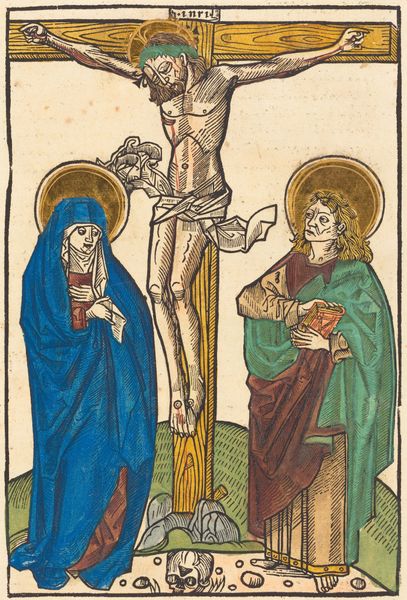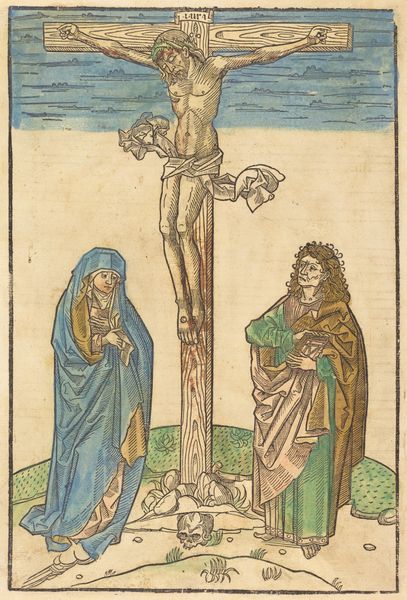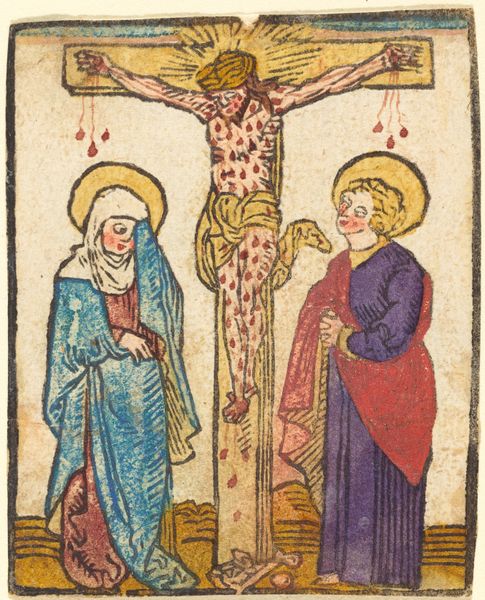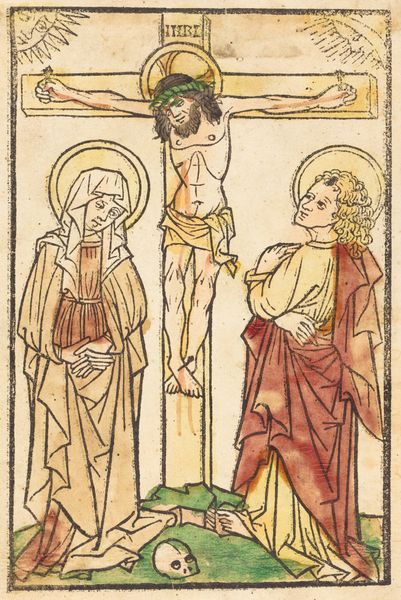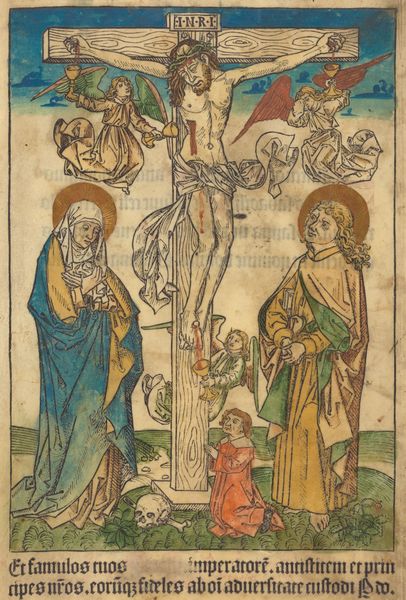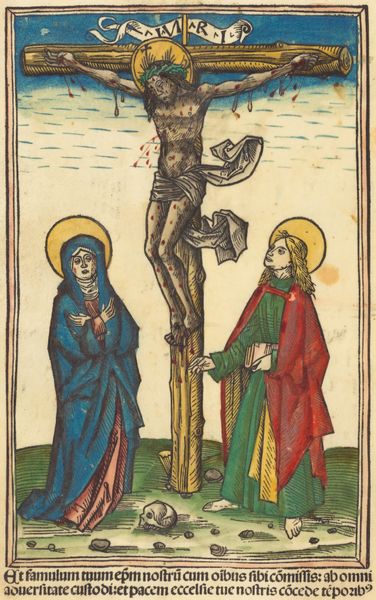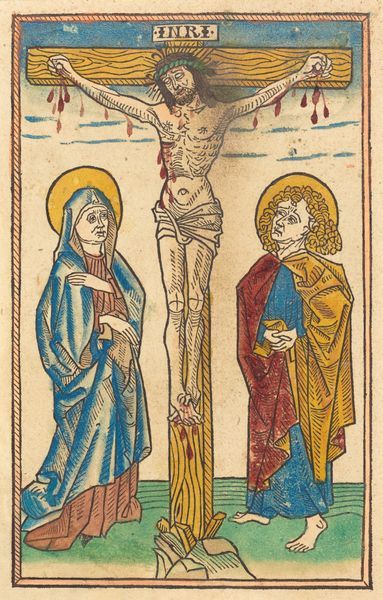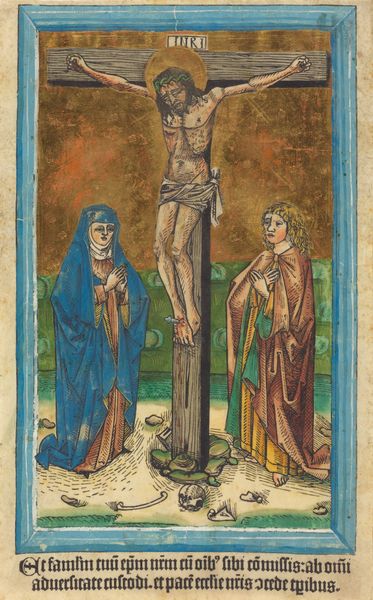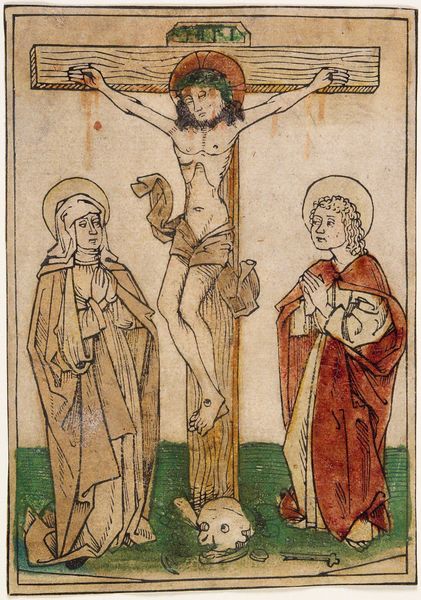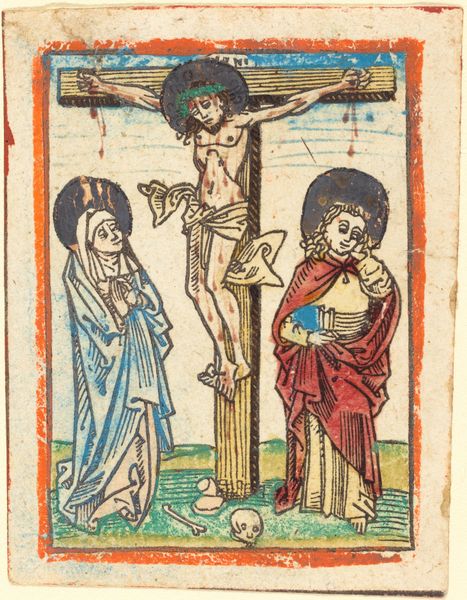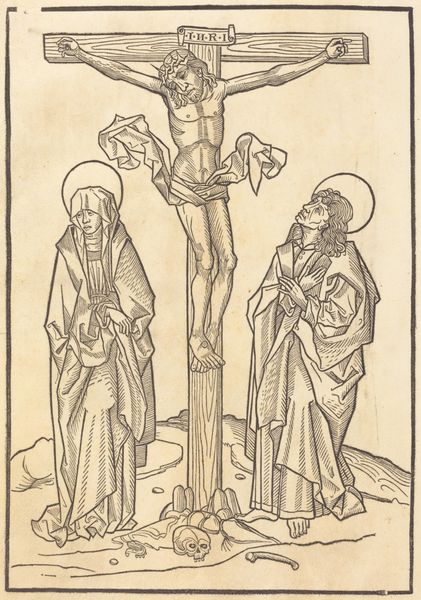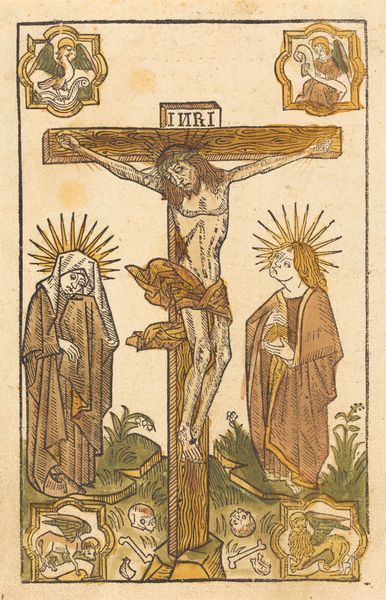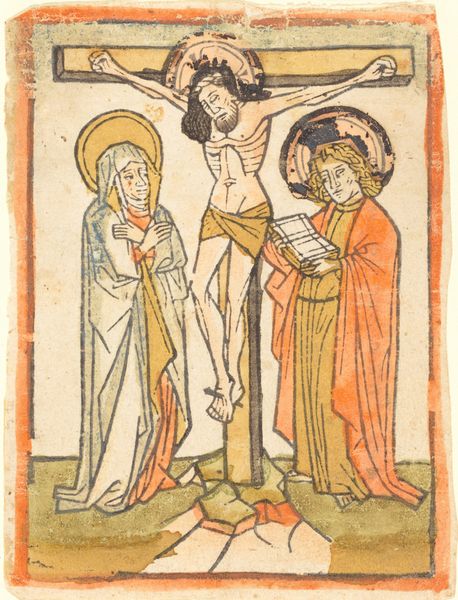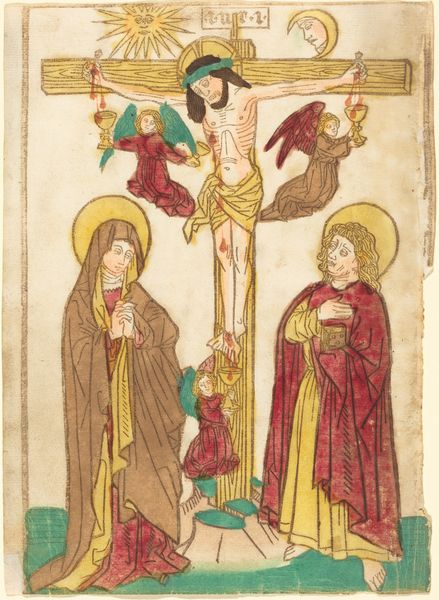
print, woodcut, engraving
#
medieval
#
pen drawing
# print
#
landscape
#
figuration
#
woodcut
#
line
#
history-painting
#
engraving
Copyright: National Gallery of Art: CC0 1.0
Curator: This woodcut engraving, known as "Christ on the Cross," was created circa 1490 by an anonymous artist during the late medieval period. It’s an emotionally intense print. What strikes you initially? Editor: The stark contrast! It’s predominantly line-work. The formal deployment of these graphic lines articulates light, shadow and emotion, making it strikingly direct. Curator: And think about the context – during this time, these prints served as vital visual aids for religious devotion, particularly within communities with limited access to elaborate art or literacy. Editor: Absolutely, it underscores the power of simplifying complex narratives through visual shorthand. Observe how the composition directs the viewer’s gaze upward to Christ, emphasizing his sacrifice. Semiotics come into play here, because certain codes give symbolic weight to both the landscape style and the figuration depicted here. Curator: Indeed. We see Mary on the left, and probably John the Evangelist, mirroring her, on the right. Notice how their inclusion anchors the central figure to concepts of sorrow, faith, and witness—roles prescribed and understood in the contemporary social fabric of the time. Editor: And these background figures reinforce the notion that every line, whether in depiction of suffering or religious ecstasy, works hard. We’re faced with formal discipline in service to devotional narrative. Curator: What’s also striking to me is the repeated imagery of bones and skull, emblems that bring notions of death and resurrection to the center of Christian promise during an age of incredible upheaval and reformation in thought. Editor: Precisely, such visual codes offer potent means for viewers to confront and meditate on their own mortality in the context of hope and salvation promised by the death of Christ. I also love the choice to focus the coloring solely on Christ's stigmata: those few crimson streaks speak volumes. Curator: Thank you, yes, I am always compelled to study the historical dynamics of these representations—art as a form of visual scripture and political discourse. Editor: And I through its inherent form, this work demonstrates the emotive possibility within even the most constrained structure.
Comments
No comments
Be the first to comment and join the conversation on the ultimate creative platform.
